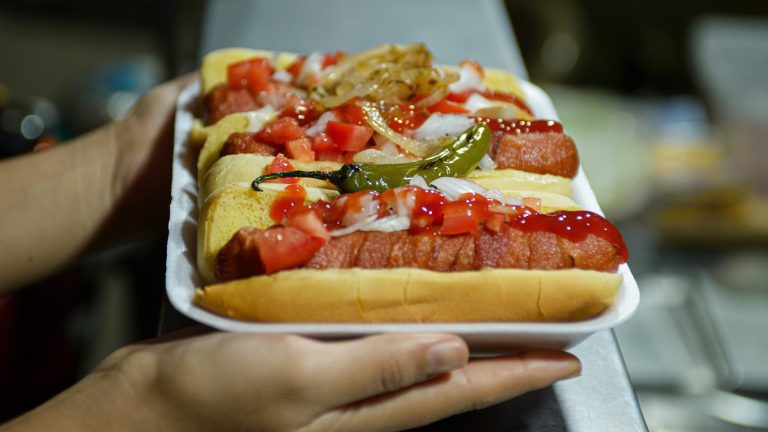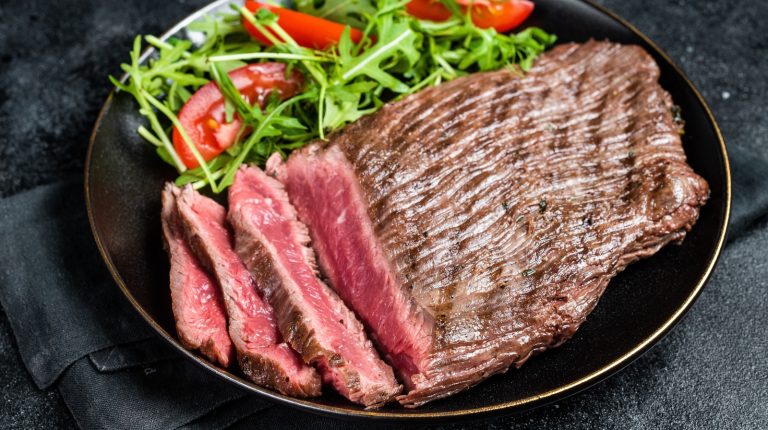Fried chicken restaurants tend to gain ravenous followers thanks to their delicious recipes that span a wide breadth of Southern cooking or even Korean cuisine. While many places are arguing about buckets of chicken and who has the best spicy chicken sandwiches, one fried chicken restaurant chain chose to go against the grain. A Louisiana-based fried chicken restaurant that first appeared on the scene way back in 1996, Raising Cane’s plays a slightly different tune than other chicken places.
Raising Cane’s offers a very limited menu, focusing on just chicken fingers, fries, Texas toast, coleslaw, and, of course,their famous secret sauce. Their chicken-fingers-only menu appeals to millions of people, with Raising Cane’s boasting around 900 locations in 2025. In fact, 90 of these locations were opened in 2024 alone! Raising Cane’s is certainly growing, leading even more people to it down-to-earth restaurants.
Given the small number of options available to visitors, it’s not surprising to hear that there isn’t much of a secret menu or speciality that really draws people in. The quick service and simple decision-making afforded by their five combo boxes are a complete package that their fans adore. Still, the brand has some secrets to share, and anyone who considers themselves a “Caniac” should relish learning more about this lovable fried chicken brand.
BOB Texas toast is the best hack
There aren’t many food “hacks” at Raising Cane’s, but the few that do exist can be difficult to discover since the menu is so straightforward. One “secret menu” item that most die-hard fans love to share with friends, family, and the internet is the BOB Texas toast. Anyone who can’t get enough of restaurant breads, such as Texas Roadhouse’s rolls, needs to get down to their nearest Raising Cane’s, as their Texas Toast is utterly delicious even without making any special requests.
Normally, when ordering any of the adult combos, a thick slice of Texas toast is included. Most bread enthusiasts agree that Texas toast can make almost any bread-based recipe tastier than ever, and there’s nothing new about the side dish at Cane’s. This light and fluffy bread is toasted in butter with a bit of garlic until it is golden brown. However, ordering it “BOB” makes it even better, as the acronym stands for “buttered on both sides”.
As the name suggests, this request just gives visitors more of a good thing. It might just be the fact that restaurants tend to have much better tasting butter than most people keep at home, but something about getting BOB Texas toast makes for a magical combination with the fried chicken. Plus, according to some Redditors, this request isn’t an inconvenience to the Cane’s staff — as long as you don’t order a metric ton of it, which might be hard to resist.
You can order naked chicken fingers
Having such a limited menu can be a challenge, especially for those trying to stick to their diets. Luckily, getting fried chicken at Raising Cane’s doesn’t necessarily mean breaking your healthy meal streak. At the very least, it’s easy to get a much more nutritious meal than standard fried chicken.
The main reason for this that people can actually order “naked” chicken strips. The chicken is still fried and tastes great, but it comes without the batter surrounding each piece. That’s great news for anyone who’s on a low-carb diet, like Keto diet, or don’t consume dairy.
Granted, the standard box combo at Raising Cane’s has a total of 1,290 calories, so regardless of removing the batter from the chicken, it isn’t the healthiest restaurant on the planet. However, if everyone in a group wants to go, those on a diet have some options to make their plate a little friendlier to their restrictions.
LSU gave Raising Cane’s business plan the lowest grade
They say great ideas only come around once in a blue moon, and in the case of Raising Cane’s that opportunity almost waned into nothingness before the founder even finished school. The founder and CEO of Raising Cane’s, Todd Graves, originally got his Bachelor of Arts and Science at the University Of Georgia, but soon partnered with Craig Silvey to create a solid business plan. Through Louisiana State University, Silvey presented the pair’s chicken tender restaurant idea.
It got the lowest grade in the entire class. Graves didn’t give up though, thankfully, but it wasn’t easy to go on from there. He first tried to get a bank to back his idea, but none put much stock in his business plan either. Eventually, he had to give up — for a time.
Pivoting to grueling work as a boilermaker in oil refineries across the country, then on to doing commercial fishing in brutally cold Alaska, Graves worked as hard as he could to come up with the capital himself. These jobs included up to 90 hours of work per week, all in some fairly tough conditions. The hard work paid off in the end though, as the original Raising Cane’s restaurant was seeded with the money Graves pulled in through these challenging roles.
There have been three dog mascots
Most Raising Cane’s fans can envision their favorite location, and that image almost always has the restaurant’s mascot displayed, smiling through bright sunglasses, encircled by a vibrant heart. Raising Cane’s mascot is, naturally, Raising Cane the yellow Labrador Retriever.
Graves hadn’t considered the dog’s name while initially naming the restaurant, planning to call it “Sockeye’s” at first, a nod to his days as an Alaskan salmon fisherman. While constructing the first Raising Cane’s location, the adorable dog was always by his master’s side, prompting a friend to suggest a name change. Thus, Cane was promoted to mascot and the rest is history.
Since then, as Raising Cane’s has been in operation for nearly thirty years, there have been successors to the original Raising Cane dog. Cane II was a lovely Lab that did double duty as a certified pet therapy dog. She regularly visited hospital patients around the country. Cane III just turned seven and enjoys representing the Raising Cane’s family on Instagram. She also frequents various Cane’s restaurants, to the delight of crew members eager to give her belly rubs. Overall, Cane III seems to be happy to have been born into a fried chicken household.
Raising Cane’s almost went under after Hurricane Katrina
Raising Cane’s was born out of the determination and hardwork of its founder, but that doesn’t mean that it was smooth sailing from there. In 2005, the devastating storm Hurricane Katrina ripped through Louisiana. Among the damage were 21 of Raising Cane’s 28 Baton Rouge locations. It was a tough time for everyone, though Cane’s CEO, Todd Graves, admits that his own actions combined with the hurricane in the worst way.
In fact, Graves almost went out of business during the aftermath of Hurricane Katrina.The closed Baton Rouge restaurants? Turns out the revenue generated was the difference between Graves paying his bills and defaulting on them. Earlier in the restaurant’s history, Graves took out loans with private investors at a 15 percent interest rate. Next, he took that cash to community banks, treating the debt as equity, which let him get even larger loans. This helped the chain expand quickly, but when Katrina hit, things got dire.
“I tell entrepreneurs, ‘Don’t do that,’ because my dream almost just went away,” Graves said on the Trading Secrets podcast in 2024. The secret to staying afloat? The same thing that makes Raising Cane’s special to begin with: a simple menu. The limited options meant that the stores could reopen that much faster.
Raising Cane’s didn’t layoff any employees during the Pandemic
The pandemic is now five years behind us all, yet its shadow still looms, even as people are starting to reflect on everything that happened. Restaurants were among some of the hardest hit businesses, as they had to close for public safety, resulting in yet another industry issuing massive layoffs to its workforce. However, Raising Cane’s once again stood out against the crowd during this incredibly challenging time.
At the time, the restaurant chain had roughly 500 restaurants, though only 33 non-drive-thru locations temporarily closed. Once again, Cane’s simple business model was able to deliver on all fronts. Even with the 33 closures, none of Raising Cane’s 23,000 employees were laid off during the pandemic. That’s an impressive feat on its own, but Cane’s didn’t stop there.
Raising Cane’s downtown Baton Rouge location had eight employees sewing three-ply masks for local hospitals. Despite not all of its employees having sewing experience, the team got to work. Eventually, Raising Cane’s crew members donated thousands of masks to area hospitals across the country. It was certainly a different approach, but one that Raising Cane’s employees and their communities found immense comfort from.
Corporate employees had to be fry cooks at one point
Raising Cane’s is well-known for being a little different from other big chain restaurants, not only because of the fact that it basically only sells fried chicken tender meals. The company isn’t immune to the same problems that plague its bigger competitors, though. In September 2021, 71 percent of restaurants reported that they were understaffed, and Raising Cane’s locations were among those who were hard-pressed for help in the kitchen.
The solution was almost novel, at least when compared to other restaurant chains. Roughly one-third of Raising Cane’s corporate employees became fry cooks and cashiers for a short while during the height of the issue. At the time, Raising Cane’s had a total of 750 corporate employees, and decided to draw from the 500 who worked in its Dallas office.
A full 250 corporate employees became frontline workers, filling roles as fry cooks and cashiers. The other 250 conscripted corporate employees were assigned to recruitment and marketing, training the new employees that would replace them before they returned to the office. For two weeks, these corporate employees were given hotel rooms, on behalf of the company, to accommodate what was likely the oddest work trip of their lives. Cane’s ended up investing $70 million into workers’ pay, giving them 15 to 22 percent wage increases in order to hire 10,000 people in 50 days.
The original location is a Baton Rouge tourist attraction
Despite the rough beginnings that Raising Cane’s faced with LSU giving the business plan a horrible grade, the fried chicken restaurant chain is now a great point of pride for the state of Louisiana. At the state’s capital, Baton Rouge, Cane’s fans can find the original Raising Cane’s location, which is referred to today as “the Mothership”. The building used to be an old bakery, but now serves not only as a Raising Cane’s location, but also as a tourist attraction, fully sanctioned by the city of Baton Rouge, LA.
Highlighted on the Visit Baton Rouge website, Raising Cane’s first location is currently number 11 on the city’s list of iconic eats. Having been the first of many to come, the Mothership looks quite different than other Raising Cane’s locations. The older building has warm wood paneling covered in memorabilia about LSU, the state of Louisiana, and, naturally, the Cane’s brand. Plus, the booths feature matching tones of brown and wood finishes. Oh, and there’s tiger-striped upholstery on each bench. The location is certainly a fun, retro look at where Raising Cane’s got its start, right in the heart of Baton Rouge.
The logo is based on an old bakery
When Raising Cane’s founder Todd Graves finally raised enough money to open his first restaurant, he decided to break ground in Baton Rouge, right near LSU. The best location he could find? An old bakery that was in desperate need of renovation.
During this work, Graves uncovered bits and pieces of the bakery’s legacy, including a fairly clear color scheme and logo. It hadn’t even been clear that any trace of the bakery was still left, as a stucco wall had covered the old designs. However, when Graves uncovered the bakery’s mural, he was thrilled. According the Raising Cane’s website, Graves too this “as a literal sign that this was going to work.”
The blocky red background with its cursive white lettering and golden motto belonged to Wolf’s, which advertised “bread at its best”. The simple style was perfect for the no-frills restaurant and served as inspiration for the Raising Cane’s logo. Today, these elements can still be seen in the oval logo. The lettering is slightly different, as are the yellow and gold accents, but it’s easy to see the influences of the past. Raising Cane’s logo design pays homage to those who came before it. After all, who knows how Raising Cane’s might have done if that old bakery had never existed to begin with!
The first shift was from 9 p.m. to 3:30 a.m.
Starting a business is hard, and plenty of experts agree that one of the mostdifficult types of businesses to start is a restaurant. There is seemingly no end to the problems that an owner can run into, and Raising Cane’s was not an outlier in this respect. The first day that it was set to open, nobody could get the cash registers to work! It was nearly a disaster, but finally, at 9 p.m., the problem was solved. Todd Graves himself ran into the street to try to get customers into the restaurant.
Even though there had been a rough start to the opening, business picked up soon enough. That first shift went until 3:30 in the morning! It was an exciting time for everyone involved, but also served as a sign of what was to come. The silly little idea of offering just chicken fingers as a main course was an immediate hit. To this day, the original location is open until 3:30 a.m., Thursday through Saturday, as a nod to that first hectic day. Most of the other locations across the country close at a more reasonable 12 a.m. or 1 a.m., since those don’t have a legacy to live up to.
The CEO likes to swap out his coleslaw
Substitutions at a restaurant are something that some people just can’t live without. Most of these types of foodies know to ask to swap out parts of their menu, and at Raising Cane’s, it’s really that simple. In fact, many Cane’s fans enjoy swapping their fries or coleslaw for another piece of buttery Texas Toast. One such fan is the owner and CEO himself.
Todd Graves’ favorite combo technically isn’t on the menu. The standard box combo comes with four chicken fingers, crinkle-cut fries, Cane’s sauce, Texas toast, coleslaw, and a fountain drink or tea. “I’m not a slaw fan,” Graves told AllRecipes in 2024, explaining his preference for substituting sides.
Instead, Graves’ go-to combo box includes no coleslaw and two slices of Texas toast, rather than the standard single slice. Swapping out parts of a combo box is a common enough “hack” at Cane’s, with fans grabbing an extra serving of their favorite side in place of whichever one they like least. Of course, fans who can’t let go of any one item can always order extra sides to satisfy their cravings.
There are two ways to have a chicken sandwich at Cane’s
The chicken sandwich wars may be over, but its legacy still leads foodies to the doorsteps of many fried chicken restaurants. Raising Cane’s ranks among the restaurants with a chicken sandwich on the menu, which is almost a necessity for competition in the market at this point. However, Cane’s fans quickly realized that there is more than one way to have a delicious chicken sandwich from their favorite place.
Sure, the standard chicken sandwich combo can be ordered. That will get patrons three chicken fingers on a toasted, sesame seed bun, with lettuce, fries, and a drink. The other method of ordering a chicken sandwich includes a bit of DIY and comes with some options. By ordering the standard box combo, which comes with chicken fingers, fries, coleslaw, and Texas toast, people can construct a custom chicken sandwich.
Ordering an extra slice of Texas Toast is the easiest way to do this, but if someone isn’t interested in coleslaw or fries, a substitution can be requested. Once there are two slices of Texas toast available, Raising Cane’s fans can pile on the chicken fingers and other sides to create a monster sandwich. The buttery toast is super fluffy, even if it is covered in butter. It’s not the cleanest way to have a chicken sandwich, but to many “Caniacs”, it’s the best way to have a Raising Cane’s chicken sandwich.




